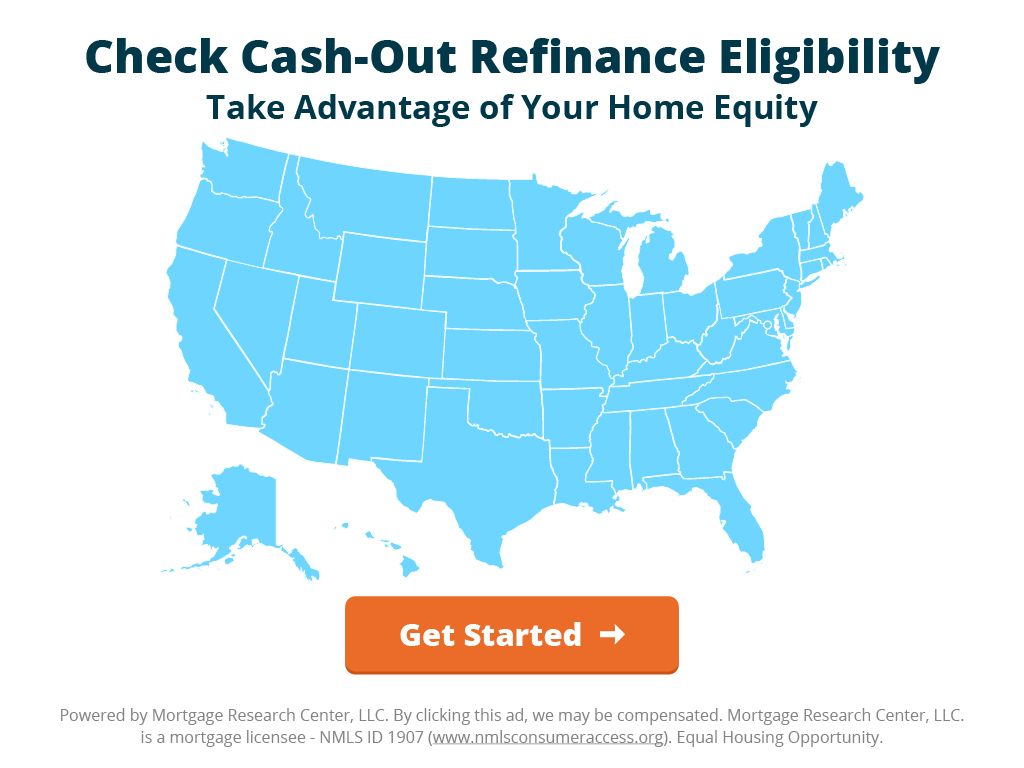Ready to tap into your home equity? How to compare cash-out refinances, home equity loans and HELOCs.

The surge in home prices over the last two years has been an advantage for consumers who want to take advantage of their property’s equity – meaning the value of a home minus the mortgage against it – and use the proceeds for renovations, education or to pay down debt.
U.S. home prices gained 20.4% in April from a year earlier, despite an increase in mortgage rates, according to a report on last month from S&P CoreLogic Case-Shiller Indices. This follows a 20.6% gain in March. Home prices have risen by 42% since the start of the pandemic, including a 9% gain just since the beginning of 2022, according to Black Knight, a mortgage data firm.
An increase in the value of a home means mortgage lenders and banks can offer larger cash-out refinances, home equity loans and HELOCs. Homeowners gained $2.8 trillion in tappable equity over the past 12 months, Black Knight said.
What Is a Cash-Out Refinance?
A cash-out refinancing is a new mortgage a homeowner receives to obtain a lump sum payment. Most lenders require homeowners to maintain a 20% equity buffer, meaning they can’t borrow beyond 80% of their home’s value, including the property’s primary mortgage.
“You take all the cash out at once and start paying interest on it right away, unlike a home equity line of credit where you can borrow money as you need it,” said Greg McBride, chief financial analyst for Bankrate, a financial data company.
A cash out refinance means homeowners are stretching out the repayment over as much as 30 years, he added.
The interest rates for a cash out refinance are typically lower compared to using credit cards. The average interest rate for credit cards is 19% for new offers and 15% for existing accounts, according to a WalletHub study. That compares to an average rate of 5.51% for a 30-year fixed mortgage in mid-July, according to Freddie Mac data.
MORE: See how much you could borrow with a cash-out refinance loan

What is a Home Equity Loan?
Borrowing against the equity in your home is a cheaper way to finance renovations than putting the cost on a credit card, whether you choose a home equity loan or a HELOC. One drawback is that both types of loans require you to pay closing costs and fees similar to a traditional mortgage.
These loans are often called “second mortgages” or “junior liens” and use your house as collateral. A home equity loan typically provides the homeowner with a lump sum of money and a fixed interest rate. A home equity line of credit, known as a HELOC, allows homeowners to draw funds as needed and repay the money at a variable interest rate.
“While home equity loans provide the certainty of a fixed interest rate and monthly payment for a defined term, the lump sum borrowing might not be ideal for remodeling costs that are incurred in stages,” McBride said.
MORE: Cash-out refinance vs. home equity loan or HELOC? Check your options with a trusted lender!
How HELOCS Work
A HELOC is similar to a credit card, but has a lower interest rate since your home is used as collateral. Consumers are approved for a certain amount of debt such as $50,000, as long as the amount leaves at least a 20% equity buffer for the property.
Consumers do not have to borrow the entire amount at once and can draw down or borrow from the total amount as their renovation project progresses or when the money is needed to make payments. Borrowers typically are given checks or a card that looks like a credit card to spend the funds.
HELOCs are often popular because the additional equity in a home gives the consumer flexibility of how much they want to borrow and repay. If your income fluctuates, you can increase or slow down the amount of money that is borrowed to fit your budget and goals.
“In using a HELOC, you need to be disciplined enough to make principal payments each month so you don’t carry the loan for too long,” said Brent Weiss, co-founder of Facet Wealth, a Baltimore-based financial planning services firm.
If you’re doing renovations and do not have a set schedule, a HELOC might be a good fit, said Bruce McClary, spokesperson for the National Foundation for Credit Counseling, a Washington-based nonprofit organization.
“For projects where there may be uncertainty about the precise cost, it may make more sense to apply for a home equity line of credit,” he said.
More from Mortgage Research News:
How to Buy a Home With a Low Or No Down Payment
Want to Boost Your Home Value? Avoid These Seven Remodeling Projects
Pros and Cons of Adjustable-Rate Mortgages as Homebuyers Seek Cheaper Financing
Ellen Chang is a Houston-based freelance journalist who writes articles for U.S. News & World Report. Chang previously covered investing, retirement and personal finance for TheStreet. She focuses her articles on stocks, personal finance, energy and cybersecurity. Her byline has appeared in national business publications, including USA Today, CBS News, Yahoo Finance MSN Money, Bankrate, Kiplinger and Fox Business. Follow her on Twitter at @ellenychang and Instagram at @ellenyinchang.




